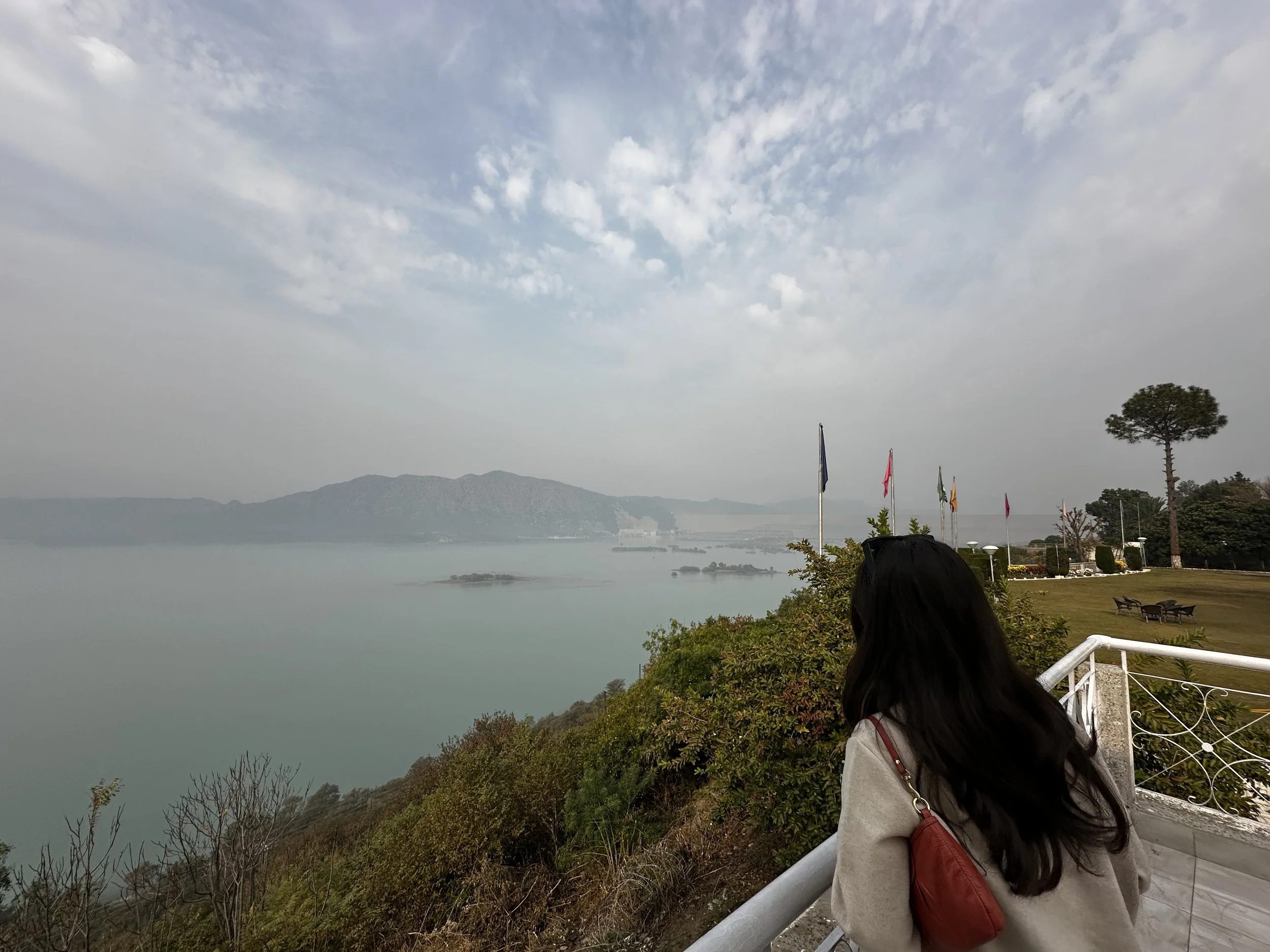The 2025 Pakistan Floods: Causes, Consequences, and the Call for Awareness
A Nation Drowning Again
Pakistan is no stranger to floods. Yet the monsoon of 2025 has reminded the country, once again, of its extreme vulnerability. Beginning in late June and intensifying through August, torrential rains, overflowing rivers, and glacial lake bursts combined into a lethal mix that has devastated provinces from Khyber Pakhtunkhwa (KP) to Punjab and Sindh.
By the end of this summer over 900 deaths had been reported nationwide, with more than 1.8 million displaced and 4.2 million people affected. Punjab has borne the brunt, where more than half a million fled their homes in a single day, and nearly 2 million people were displaced in central districts like Jalalpur Pirwala. In eastern Punjab, 3,900 villages were submerged, making it the province’s worst flooding in four decades. In Khyber Pakhtunkhwa, sudden cloudbursts and landslides in districts like Buner, Swabi, and Shangla buried entire homes under rock and mud.
This year’s floods may not have submerged one-third of the country as they did in 2022, but the stories of despair and loss feel just as heavy. Once again, Pakistan found itself battling not just floodwaters but also the question: Why does this keep happening?
The Anatomy of a Disaster: Why Floods Strike Pakistan
Pakistan sits squarely in the South Asian monsoon belt. Each summer, warm air currents from the Indian Ocean bring heavy rains. These rains are life-giving for agriculture, but in excess they turn deadly.
Climate change is supercharging these monsoons. Warmer air holds more moisture, leading to sudden, violent downpours. Meteorologists estimate rainfall intensity in northern Pakistan this year has been 50-60% higher than in 2024. Cloudbursts, what scientists describe as “rain bombs”, have become frequent, with some areas receiving an entire month’s rain in a single night.
The north faces additional dangers from glaciers. Pakistan has over 7,000 glaciers, many unstable due to rising temperatures. Glacial lake outburst floods (GLOFs) occur when water trapped by ice suddenly bursts, creating a wall of water and debris. In Gilgit-Baltistan, the Shisper Glacier triggered destructive flooding in August, sweeping away farmland and cutting off valleys.
The country’s infrastructure deficit amplifies the disaster. In Karachi, poorly maintained drainage channels clogged with waste caused streets to turn into rivers. In Punjab, weak embankments failed under pressure from swollen rivers like the Sutlej and Ravi. In KP’s mountains, deforestation and unplanned construction worsened landslide risk.
In short: climate shocks collide with structural weaknesses, and the result is catastrophe.
The Human Story: Loss and Resilience
For families, the flood is not an abstract climate event but an intimate disaster.
In Buner, villagers recounted how a night of torrential rain turned into a landslide that buried entire homes. Survivors described clawing through mud with bare hands to pull out relatives. One father told local reporters, “I found my son’s schoolbag in the mud, but not my son.”
In Punjab, families climbed to rooftops as floodwaters swallowed their villages. Mothers carried infants in cooking pots, fathers tried to salvage livestock, and children watched their toys float away. In Lahore and Rawalpindi, commuters were stranded as drainage systems failed, while small shops lost weeks of income overnight.
Over 2,000 homes have been destroyed. Relief camps in schools and mosques are overflowing. Families sleep under open skies on embankments, living on rations of lentils and bread provided by aid groups.
Yet resilience endures. Volunteers have waded through waist-deep water to deliver food. Mosques opened their doors for shelter. Neighbors shared what little they had. “We lost our home, but our village is still together,” one woman in Punjab said.
Historical Comparisons: 2010, 2022, and 2025
Pakistan’s recent history is punctuated by devastating floods.
2010: The Indus floods killed over 2,000 people, displaced 20 million, and caused economic losses of around $43 billion. Entire districts in Sindh and Punjab were under water for weeks. It was, at the time, called the worst disaster in Pakistan’s history.
2022: Historic rains submerged one-third of the country. Nearly 1,700 died, 33 million were affected, and the economic toll was estimated at $30 billion. International appeals raised billions, but reconstruction lagged. Many communities destroyed in 2022 had barely rebuilt when 2025’s waters arrived.
2025: While less geographically widespread, the floods have been the most destructive in 40 years in parts of Punjab. The intensity of cloudbursts in KP and the number of displaced people in Punjab underscore how climate change is shifting disaster patterns.
The lesson is sobering. Every few years, Pakistan faces “once-in-a-lifetime” floods. And each time, the threshold for what counts as catastrophic gets lower.
Secondary Hazards: Landslides, Epidemics, and Food Insecurity
Floods aren’t limited to water damage and drowning cities; they are the catalyst for a plethora of other problems.
Landslides in KP and Gilgit-Baltistan buried villages, blocked the Karakoram Highway, and cut off valleys. Roads to China were severed, stalling trade. Families lost not only homes but also farmland and orchards.
Disease outbreaks loom. Stagnant water breeds mosquitoes, raising fears of dengue and malaria. Contaminated supplies threaten cholera and diarrhea outbreaks, particularly among children. UNICEF has warned of an urgent need for safe drinking water and sanitation in flood-affected camps.
Food insecurity is another concern. Punjab is Pakistan’s breadbasket, and thousands of acres of crops have been destroyed. For a country already battling high food inflation, the loss of wheat, rice, and vegetables risks driving millions into hunger.
Government and International Response
The Pakistani government has launched large-scale evacuations, especially in Punjab where one million people were relocated. The army has used boats and helicopters for rescues, reopened blocked roads, and restored electricity to 70% of affected areas within days. Still, the scale of destruction leaves many beyond reach.
International agencies have stepped up.
UNICEF is providing safe spaces and health services for displaced children.
CARE is distributing shelter kits, food, and hygiene supplies.
Pakistan Red Crescent, supported by the British Red Cross, is delivering emergency medical aid and shelter.
Concern Worldwide is providing clean water and food.
Yet needs outpace resources. Aid groups say camps are understocked, medical teams overstretched, and psychosocial support almost nonexistent.
The Cross-Border Dimension
The floods have not stopped at borders. India released water from upstream dams on the Sutlej, Ravi, and Chenab rivers, warning Pakistan of the risk. This led to emergency evacuations of 150,000 villagers. While India did give advance notice, the event highlights fragile regional cooperation on water sharing. With both countries facing climate-driven floods, greater collaboration is essential.
A Timeline of the 2025 Floods
Late June 2025: Heavy monsoon rains begin in northern Pakistan. Flash floods trigger landslides in Gilgit-Baltistan.
July 2025: Monsoon rains intensify; Karachi experiences urban flooding due to clogged drains. Punjab rivers swell, breaching embankments.
Early August 2025: Cloudbursts in KP kill hundreds. Buner and Swabi hardest hit by landslides. UNICEF reports over 300 child deaths.
Mid-August 2025: Punjab faces its worst flooding in 40 years. Over 1.2 million affected, nearly 250,000 displaced.
Late August 2025: Death toll surpasses 700 nationwide. India releases water into cross-border rivers. International aid appeals launched.
The Bigger Picture: Climate Justice
Pakistan contributes less than 1% of global greenhouse gas emissions, yet faces some of the worst consequences of global warming. This is the cruel irony of climate change: those least responsible suffer the most.
Floods are not just natural disasters, they are political and global. The call for climate justice is louder than ever. Pakistan requires not only humanitarian aid but also investment in climate adaptation: resilient housing, reforestation, better drainage, and early warning systems. Without this, each monsoon season will bring déjà vu of destruction.
How You Can Help
As a Pakistani, these floods are not just headlines. They are a sobering reminder of how increasingly vulnerable my home is to the affects of climate change, raises the question of how my generation and generations after me will face this. They remind us of our fragility but also of our strength.
If you can, please consider donating to organizations working directly on the ground for recovery and rebuilding efforts:
Pakistan Red Crescent / British Red Cross - Emergency medical aid, relief camps, and recovery.
CARE Pakistan - Shelter, food, and clean water support for displaced families.
UNICEF Pakistan - Protecting children’s health, nutrition, and education.
Concern Worldwide - Delivering food, clean water, and psychosocial support.
For those outside Pakistan, sharing verified fundraising links, pressuring governments to support climate adaptation funding, and keeping attention on this crisis are all invaluable.
References
Al Jazeera. “What’s Causing Pakistan’s Deadly Floods?” August 21, 2025.
Al Jazeera. “Pakistan Floods and Cloudbursts Visualised in Maps and Satellite Images.” August 19, 2025.
Al Jazeera. “Pakistan Restores Electricity and Reopens Roads Following Deadly Floods.” August 19, 2025.
Al Jazeera. “Why Is Pakistan So Vulnerable to Deadly Flooding?” July 17, 2025.
AP News. “Floods Displace Nearly 250,000 People and Affect 1.2 Million in Eastern Pakistan.” August 2025.
AP News. “Floods in Punjab Leave Many Without Aid as Rescuers Race to Evacuate.” August 2025.
AP News. “Rescuers in Pakistan Scramble to Save Residents as Swollen Rivers Reach Dangerous Levels.” September 2025.
AP News. “Pakistan’s Southern Sindh Province Evacuates 100,000 People over Flooding Threat.” September 2025.
CARE International. “Pakistan’s Severe Monsoon Season Displaces Tens of Thousands.” August 2025.
Concern Worldwide. “Pakistan Floods Explained.” August 2025.
Financial Times. “Monsoons Claim Hundreds of Lives Across South Asia.” August 2025.
PBS. “Pakistan Reopens Roads to Areas Where Flash Floods Killed Over 300.” August 2025.
Red Cross. “Pakistan Floods: British Red Cross Launches Appeal.” August 2025.
Reuters. “More Than 1 Million People Evacuated from Pakistan’s Punjab Due to Floods.” August 28, 2025.
Reuters. “India Releases Water from Dams, Warns Pakistan of Cross-Border Flooding.” August 27, 2025.
The Guardian. “‘It Happened in Seconds’: Residents Count the Cost of Deadly Floods That Have Left Pakistan in Crisis.” August 25, 2025.
UNICEF. “UNICEF Statement on Flash Floods in Khyber Pakhtunkhwa, Pakistan.” August 2025.

